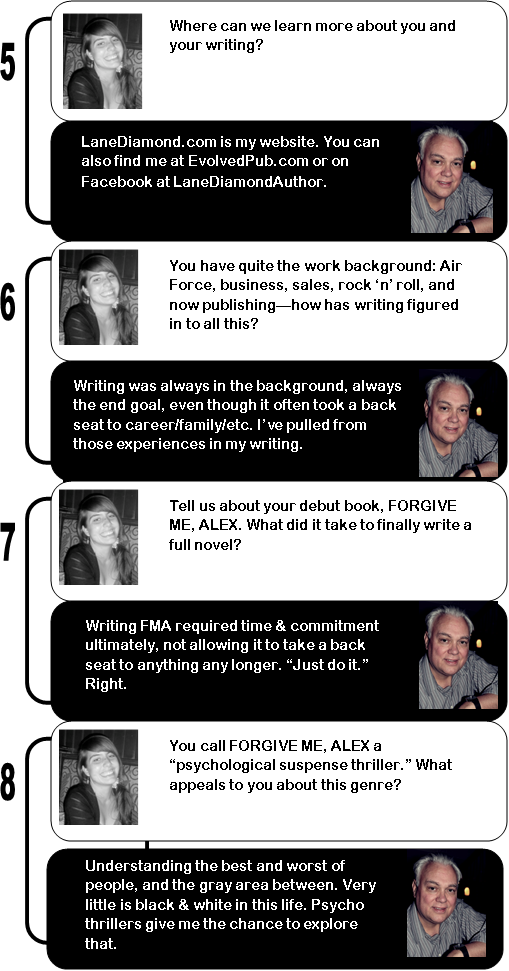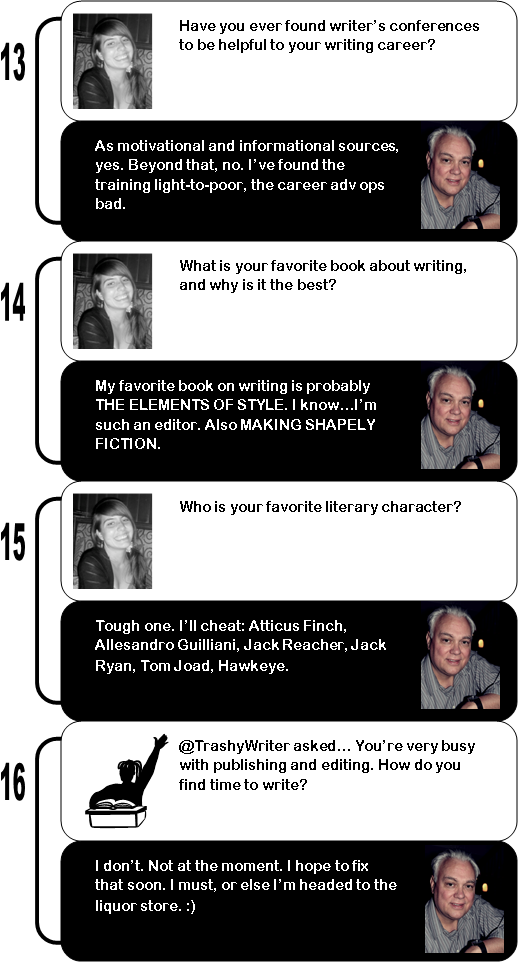In a fiction narrative, monologue (often referred to as silent dialogue) can be a great way to get inside a character’s head, and without sharing his thoughts with the other characters in the scene. That’s the key difference between monologue and dialogue: the former is a secret for the readers only, kept from the other characters, whereas the latter is a regular part of the obvious character interactions.
Monologue, like its first cousin dialogue, provides an intimacy for readers that straight narrative simply can’t achieve. I think many writers fail to take full advantage of this tool. I also believe some writers use this tool as if they’re attempting to remove a tangled wire from a kitten’s paw with a sledgehammer.
Like all tools in the Writer’s Toolbox, we must use monologue sparingly, and only where it perfectly suits the task at hand.

As a simple example, a character is in a crowded room, full of old ladies and wee children, where polite discourse is not just expected, but demanded. Then he… oh… drops that sledgehammer (don’t ask; I’m trying to make a point here) on his toe. He wants to curse up a storm at that point, but he grunts and swallows his words, because he has a responsibility to those old ladies and toddlers. Shit! Yep, that simple one-word bit of monologue works quite well, thank you.
Some scenes lend themselves to monologue better than others. In my novel, Forgive Me, Alex, as an example, I have three or four scenes that beg for monologue, those oh-crap-what-do-I-do-now moments where the character must remain silent. I use monologue several times within those scenes. During the rest of the book, monologue appears only occasionally, and only in small clusters, often a single word or sentence.
Allow me to provide an example from my novel of where a single short line of monologue works perfectly:
Oh, that grin. For seventeen years it has taunted me, punished me for my indecision, my incompetence. I missed my chance to kill him in 1978, to remove his damned head—simple, as if cutting a sheet of paper. It would have been a fitting end for a monster.
Why did I let him live?
Like whispers in a storm, those memories only tease at me now, here at this obscene and maddening event. I’m trying not to relive every moment of 1978. Every time I do, I feel as if swimming in quicksand, anchored by my constant companions—sorrow and guilt. I’m too damned tired; can’t shake the confusion, the dread. I fear surrendering to fear.
If you examine that line of monologue above, and how I proceeded into the next paragraph, you’ll see that had I made it simple narrative (a couple different ways to do so), I’d have lost some of the power of that moment.
So take advantage of this great writer’s tool… but take it easy. If you overdo it, you’ll sap the mechanism of its power.
Three things to remember about monologue in your manuscript:
1) Italicize the text, including related punctuation, and don’t use quotation marks to signify monologue.
2) Set up the mechanism early in the book (just once or twice), alerting the reader to the fact that italicized segments represent monologue, and then let it do its own heavy lifting. E.g. Holy crap, I thought, she can’t be serious. I realize this is redundant structure, but again, it’s only to set up the mechanism the first time; at least, that’s my preference.
3) Monologue, like dialogue, occurs in the moment. People talk to their selves in Present Tense, so don’t fall into the trap of writing monologue as if it were straight narrative. Use Past Tense only if the character would do so when talking to his self.
Gosh, I sure hope writers find this article helpful.
~~~~~~~~~~











Please follow me here: